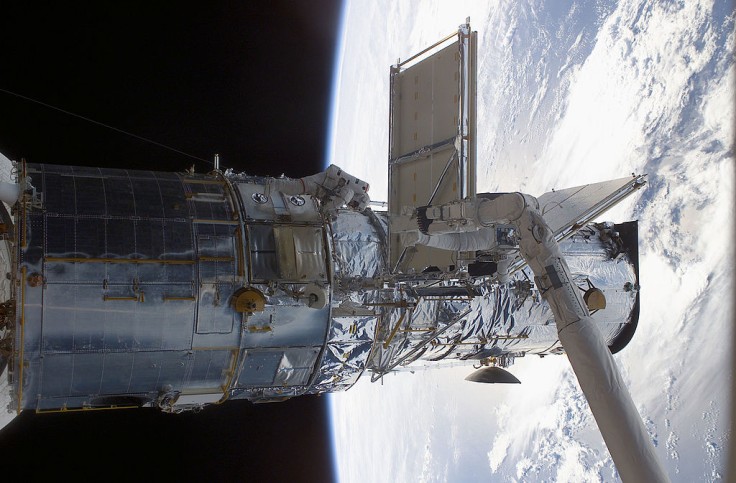
NASA's Hubble Space Telescope has peered through a Small Magellanic Cloud just outside of the Milky Way 210,000 light years away from Earth and captured yet another breathtaking sight: the star nursery NGC 346.
This star cluster, NASA said, visible at the center of the Hubble image, contains dozens of hot, blue, high-mass stars, which comprise half of its kind in the entire Small Magellanic Cloud galaxy. Other smaller, compact clusters are also seen throughout the region.
Brilliant, hot, young stars shine bright in this @NASAHubble image of the Small Magellanic Cloud. 🤩 Learn more about this nearby — only 210,000 light-years away — star-forming region in space: https://t.co/LHYGHpeo8P pic.twitter.com/SIM1QbhtYh
— NASA 360 (@NASA360) September 5, 2021
Dynamic Star Cluster with Intensely Active Newly Formed Stars
NGC 346 is a dynamic stellar area where hot new stars jostle amid the gas and dust surrounding them. As such it is filled with young blue stars clearly seen in Hubble's image that was released on August 30, Space.com revealed.
According to the NASA statement, the "torrent of radiation" from NGC 346's hot stars would eat into denser areas, "creating a fantasy sculpture of dust and gas." NASA describes a dark, intricately beaded edge of the ridge also seen in the NASA image in silhouette, as "particularly dramatic." Small dust globules encroach the cluster that "point back to towards the central cluster, like windsocks caught in a gale."
The radiation crashes into the dust and gas that surround it, thereby eroding the cluster and exposing more star-forming regions As that occurs, the dust and gas are funneled away along the radiation's path, adding up to create a spectacular sight for Hubble to capture. The Small Magellanic Cloud, NASA added, is one of the most "dynamic and intricately detailed star-forming regions." At the center pf the region is the NGC 346, wherein "arched, ragged filaments" with a unique ridge surrounding it.
Hubble Captures Rare Herbig-Haro Phenomenon
Hubble also recently captured a rare cosmic phenomenon, the "Herbig-Haro" object, which is formed when a young star expels jets of material that collide with clouds of dust and gas close to it. The rare celestial phenomenon was first observed in the late 19th century by American astronomer Snerburne Wesley Burnham, Hindustan Times noted. It happens when newly formed stars eject spurts of rapidly moving ionized gas, which is so hot that its molecules and atoms lose their electrons, thus making the gas highly charged.
May the #HubbleFriday force be with you! 🤩
— Hubble (@NASAHubble) September 3, 2021
But this cosmic view isn’t a lightsaber – it's a Herbig-Haro object, formed when a young star ejects jets of material that collide with nearby clouds of gas and dust.
Learn more about this celestial phenomenon: https://t.co/8ZXhxm5TCg pic.twitter.com/FgBnO3IQ7a
These streams of ionized gas then collide with the clouds of dust and gas that surround the newborn stars at speeds reaching hundreds of miles per second. These high-energy collisions would then result in the Herbig Hero object seen in the Hubble photo.
Hubble's Wide Field Camera 3 (WFC 3) captures images at optical, ultraviolet, and infrared wavelengths, NASA further said in a separate statement. As such, it takes celestial images at a wavelength range similar to the range sensitive to the human eyes and a range of wavelengths that are slightly too short (ultraviolet) or too long (infrared) for the human eyes to see.
While Herbig-Haro objects expel a huge amount of light at optical wavelengths, they are also difficult to observe due to the surrounding dust and gas that absorb much of the visible light. As such, Hubble's WFC3's capability to peer through the universe at infrared wavelengths makes it possible for the space telescope to observe beyond clouds of dust and gas, including the stunning NGC 346 star cluster in the Small Magellanic Cloud, and the Herbig-Haro object.









